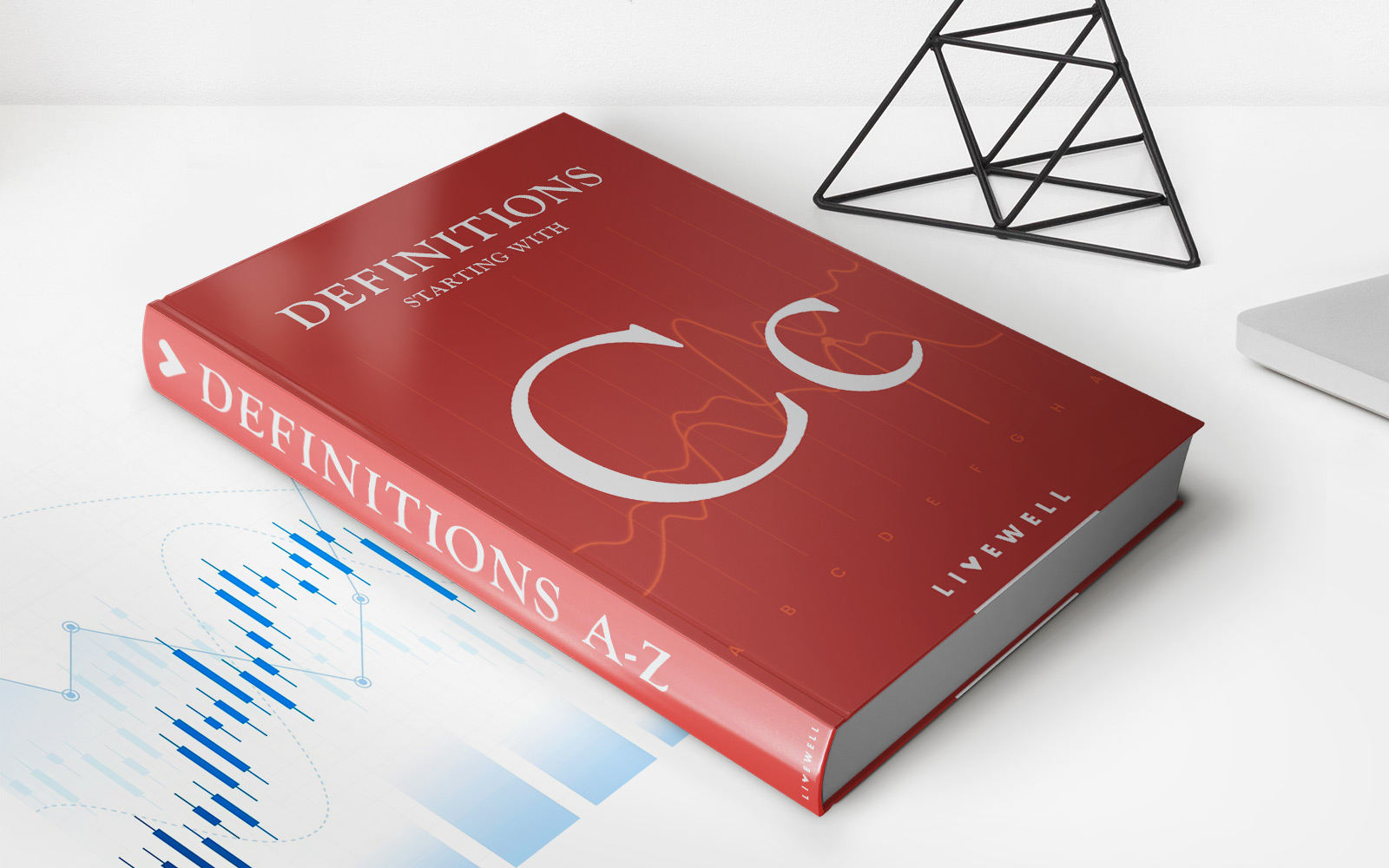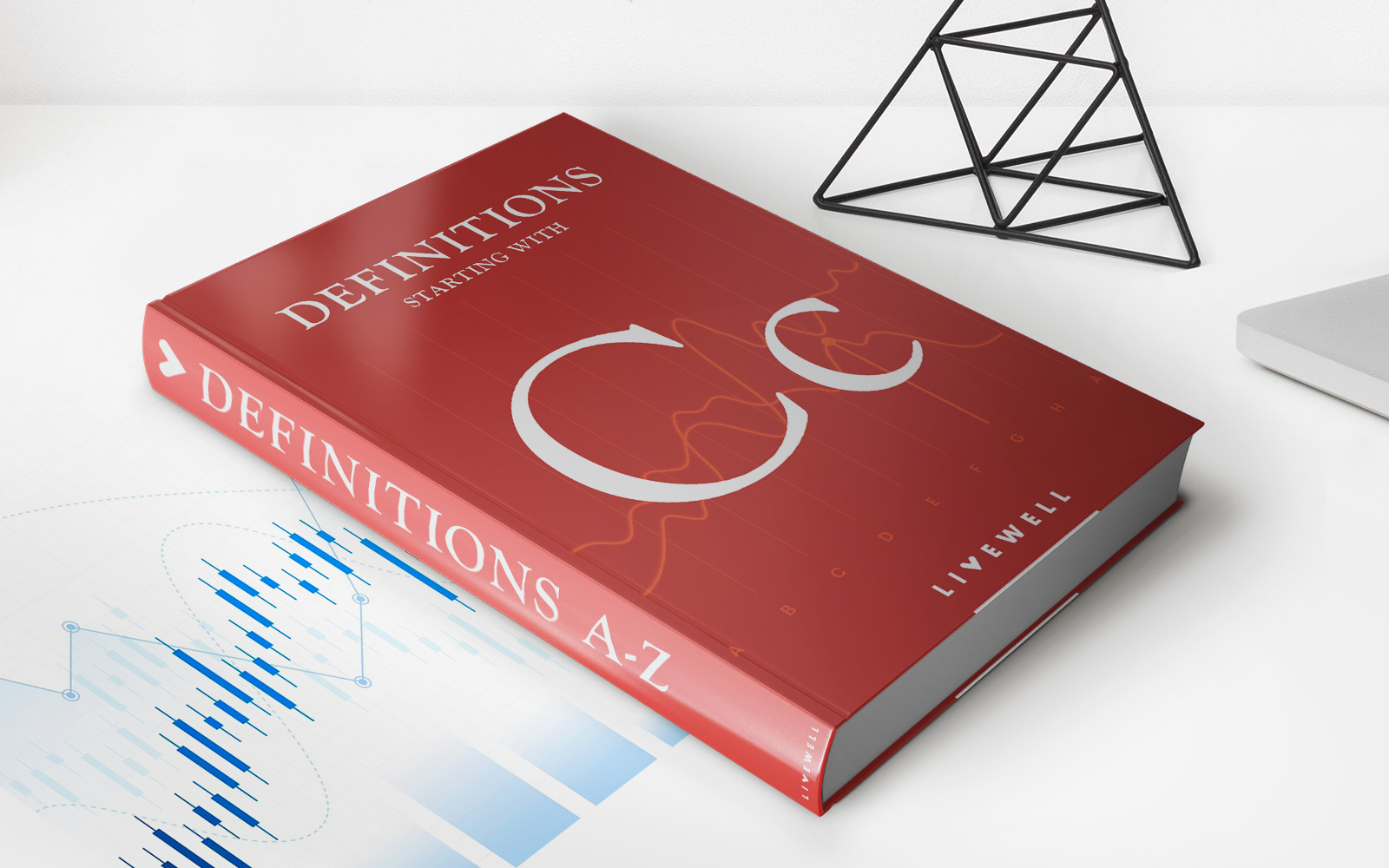Home>Finance>What Do You Need To Complete In Order To Qualify For A Federal Student Loan?


Finance
What Do You Need To Complete In Order To Qualify For A Federal Student Loan?
Published: October 20, 2023
To qualify for a federal student loan, understanding the necessary requirements is crucial. Learn what you need to complete for a financial aid opportunity in finance.
(Many of the links in this article redirect to a specific reviewed product. Your purchase of these products through affiliate links helps to generate commission for LiveWell, at no extra cost. Learn more)
Table of Contents
- Introduction
- Eligibility Requirements for Federal Student Loans
- Completing the Free Application for Federal Student Aid (FAFSA)
- Demonstrate Financial Need
- Enrollment in an Eligible Program
- Maintain Satisfactory Academic Progress
- Selecting a Direct Loan Servicer
- Entrance Counseling and Master Promissory Note (MPN)
- Accepting and Understanding the Loan Offer
- Disbursement of Federal Student Loan Funds
- Repayment of Federal Student Loans
- Loan Forgiveness and Discharge Options
- Conclusion
Introduction
Obtaining a higher education is a dream for many individuals, but the rising cost of tuition can make it seem out of reach. Thankfully, there are options available to help finance your education, and one of the most popular choices is a federal student loan.
Unlike private student loans, federal student loans are offered by the government and typically come with more favorable terms and conditions. However, in order to qualify for a federal student loan, you must meet certain eligibility requirements and complete a series of steps.
In this article, we will guide you through the process of qualifying for a federal student loan, from completing the necessary forms to understanding the repayment options. Whether you’re a high school graduate considering higher education or an adult looking to go back to school, understanding the requirements and steps involved will help you navigate the process with confidence.
By gaining a better understanding of the eligibility requirements and steps to acquire a federal student loan, you can make informed decisions and ultimately achieve your educational goals.
Eligibility Requirements for Federal Student Loans
Before you can qualify for a federal student loan, you must meet certain eligibility requirements. These requirements ensure that the loans are being provided to individuals who demonstrate the need for financial assistance to pursue their education.
Here are the key eligibility criteria for federal student loans:
- U.S. Citizenship or Eligible Non-Citizen Status: To be eligible for federal student loans, you must be a U.S. citizen or an eligible non-citizen. Eligible non-citizens include permanent residents, refugees, and individuals with asylum status.
- Valid Social Security Number: You must have a valid Social Security number to apply for federal student loans. It is an essential component of your identification and is required for the application process.
- Enrollment in an Eligible Program: Federal student loans are available for students pursuing degrees or certificates at eligible institutions. Ensure that the institution you plan to attend is accredited and qualifies for federal student aid.
- Enrollment as at least a Half-Time Student: In order to be eligible for federal student loans, you generally need to be enrolled at least as a half-time student. The specific enrollment requirements may vary depending on the type of loan you are applying for.
- Meet the Satisfactory Academic Progress Requirement: Federal student loan borrowers must maintain satisfactory academic progress as determined by their academic institution. This typically includes maintaining a certain GPA and completing a minimum number of credit hours per semester.
- Not in Default on a Federal Student Loan: If you have previously borrowed federal student loans, you must ensure that you are not in default on any of them. Defaulting on a loan can significantly impact your eligibility for future federal student loans.
- Not Convicted of Drug Offense: Eligibility for federal student loans can be affected if you have been convicted of a drug offense while receiving federal student aid.
Meeting these eligibility requirements is crucial for accessing federal student loans. It is important to ensure that you meet these criteria before proceeding with the application process.
Completing the Free Application for Federal Student Aid (FAFSA)
The first step in applying for a federal student loan is completing the Free Application for Federal Student Aid (FAFSA). This form is used to determine your eligibility for federal financial aid, including grants, work-study, and loans.
Here’s what you need to know about completing the FAFSA:
- Gather Your Documents: Before starting the FAFSA, gather necessary documents such as your Social Security number, driver’s license, tax returns, bank statements, and records of untaxed income. Having these documents on hand will help expedite the application process.
- Create an FSA ID: To sign and submit the FAFSA electronically, you will need to create a Federal Student Aid (FSA) ID. This serves as your electronic signature and allows you to access your financial aid information online.
- Fill Out the FAFSA Form: The FAFSA form collects information about you and your family’s financial situation. This includes your income, assets, household size, and number of family members in college. The form should be filled out accurately and completely to ensure an accurate evaluation of your financial need.
- Submit the FAFSA: After completing the form, review it for any errors or missing information. Once you’re confident that everything is correct, submit the FAFSA online. Remember to keep a copy of the confirmation page for your records.
- Review Your Student Aid Report (SAR): After submitting the FAFSA, you will receive a Student Aid Report (SAR) via email or mail. Review the SAR carefully and make any necessary corrections or updates.
Completing the FAFSA is a crucial step in the federal student loan application process. It provides the necessary information to determine your eligibility for federal financial aid, including the types and amounts of loans you may qualify for.
It is important to complete the FAFSA as early as possible, as some financial aid programs have limited funds and are awarded on a first-come, first-served basis. The FAFSA is typically available starting in October, and it is recommended to complete it as soon as possible after that date.
Demonstrate Financial Need
When applying for federal student loans, demonstrating financial need plays a significant role in determining the types and amounts of loans you may qualify for. Financial need is calculated based on the information provided in your Free Application for Federal Student Aid (FAFSA).
Here are some key points to understand about demonstrating financial need:
- Expected Family Contribution (EFC): The FAFSA uses a formula to calculate your expected family contribution (EFC) towards your education costs. The EFC represents the amount of money your family is expected to contribute for your education, based on their income, assets, and other factors.
- Cost of Attendance (COA): The cost of attendance (COA) is an estimate of the total cost of attending your chosen institution for one academic year. It includes tuition, fees, books, supplies, room and board, transportation, and personal expenses.
- Determining Financial Need: To determine your financial need, the financial aid office at your chosen institution subtracts your expected family contribution (EFC) from the cost of attendance (COA). The resulting amount is your financial need.
- Federal Need-Based Programs: Federal student loans are available to both students who demonstrate financial need (subsidized loans) and those who do not (unsubsidized loans). Subsidized loans have the advantage of the government paying the interest while you’re in school, making them more favorable for borrowers.
- Other Factors: Financial need is not solely based on income. Factors such as the number of family members in college, unusual medical expenses, and other unique circumstances can also impact the calculation of financial need.
By demonstrating financial need, you may qualify for subsidized federal student loans, which can help reduce the overall cost of borrowing for your education. It’s crucial to provide accurate and up-to-date financial information on your FAFSA to get an accurate evaluation of your financial need.
If you are unsure if you meet the financial need requirements, it’s always recommended to complete the FAFSA and consult with the financial aid office at your chosen institution. They can provide guidance and assistance in understanding your financial aid options based on your individual circumstances.
Enrollment in an Eligible Program
In order to qualify for federal student loans, you must be enrolled in an eligible program at an accredited institution. The program you choose will impact your eligibility for different types of federal loans and the maximum loan amounts you can borrow.
Here are a few key points to consider regarding enrollment in an eligible program:
- Accredited Institutions: Eligible programs must be offered by institutions that are accredited by recognized accrediting agencies. Accreditation ensures that the institution meets certain quality standards and that the education you receive is reputable.
- Eligible Degree and Certificate Programs: Federal student loans are available for various degree and certificate programs, including undergraduate, graduate, and professional programs. Ensure that the program you plan to enroll in is eligible for federal financial aid.
- Minimum Enrollment Requirements: Federal student loans typically require you to be enrolled at least as a half-time student to qualify. Half-time enrollment is generally defined as taking a certain number of credit hours or courses per semester or term, depending on the institution.
- Eligibility for Different Loan Types: Your program of study may impact your eligibility for certain types of federal student loans. For example, subsidized loans are available only to undergraduate students who demonstrate financial need, while unsubsidized loans are available to both undergraduate and graduate students regardless of financial need.
- Vocational and Trade Schools: Federal student loans are also available for eligible vocational and trade programs. These programs provide specific training and skill development for various professions and can be a viable option for individuals pursuing careers in specialized fields.
It’s important to research and choose an eligible program that aligns with your educational and career goals. Consider factors such as program reputation, career prospects, and the financial implications of borrowing federal student loans for your chosen program.
Before enrolling in a program, it’s advisable to reach out to the financial aid office at the institution to ensure that the program is eligible for federal student aid. They can provide guidance on the loan options available to you and help navigate the enrollment process.
Maintain Satisfactory Academic Progress
While receiving federal student loans, it is essential to maintain satisfactory academic progress to remain eligible for continued funding. Satisfactory academic progress (SAP) is a set of academic standards established by your institution to ensure that you are making timely progress toward completing your educational program.
Here are the key points to know about maintaining satisfactory academic progress:
- GPA Requirements: One of the components of SAP is maintaining a minimum grade point average (GPA) as determined by your institution. Typically, a GPA of 2.0 or higher on a 4.0 scale is required to meet the SAP standards.
- Course Completion: You are expected to successfully complete a certain percentage of the courses you attempt. This is generally measured by the number of credits you earn compared to the total credits you have attempted. Failing or withdrawing from multiple courses can negatively impact your SAP status.
- Timeframe for Completion: There is a maximum timeframe within which you are expected to complete your program. This timeframe is defined by the number of credits or semesters allowed to finish your degree. Exceeding this maximum timeframe may result in a loss of federal student loan eligibility.
- Appeal Process: If you fail to meet the SAP requirements due to extenuating circumstances, such as a personal or medical issue, there is usually an appeal process available. This allows you to provide documentation and explain the circumstances that affected your academic progress. Successful appeals may result in the restoration of federal student loan eligibility.
- Probation and Suspension: If you do not meet SAP requirements, your institution may place you on academic probation. During this time, you may still receive federal student loans but will be required to improve your academic standing. Failure to meet the requirements while on probation could lead to temporary suspension of your federal student loan eligibility.
Maintaining satisfactory academic progress is not only necessary to maintain eligibility for federal student loans but also vital for your academic success. It is crucial to understand and follow the SAP standards outlined by your institution and seek support and resources if you’re facing challenges that may impact your progress.
Remember to regularly monitor your academic progress and communicate with your academic advisor or the financial aid office if you have any concerns or need assistance.
Selecting a Direct Loan Servicer
When you borrow federal student loans, you will need to select a loan servicer. The loan servicer is responsible for managing your loan account, including billing, repayment options, and providing customer service throughout the life of your loan.
Here are some key points to consider when selecting a direct loan servicer:
- Loan Servicers: The U.S. Department of Education assigns loan servicers to borrowers who have federal student loans. These loan servicers are responsible for handling the administration of your loans. Some commonly used loan servicers are Navient, Great Lakes, and FedLoan Servicing.
- Reputation and Customer Service: Look for a loan servicer with a good reputation for customer service. You want a loan servicer that is responsive, helpful, and knowledgeable about federal student loan programs.
- Online Account Access: Consider the availability and functionality of online account access. A user-friendly online portal can make managing your loan account easier, especially when it comes to making payments, viewing your loan balance, and accessing important documents.
- Loan Repayment Options: Different loan servicers may offer varying repayment options, such as income-driven repayment plans, deferment, or forbearance. Research the options available through each loan servicer to ensure they align with your financial goals and circumstances.
- Consolidation and Refinancing: If you have multiple federal student loans, you may be interested in loan consolidation or refinancing. Check if the loan servicer you are considering offers these options, as it can simplify repayment and potentially save you money in the long run.
- Loan Forgiveness Programs: Loan servicers play a crucial role in the administration of loan forgiveness programs, such as Public Service Loan Forgiveness (PSLF) or Teacher Loan Forgiveness. Ensure that the loan servicer you choose is knowledgeable about these programs and can provide guidance on eligibility and application processes.
It’s important to do your research and compare different loan servicers before making a selection. This will help ensure that you choose a loan servicer that meets your needs and offers the services and support you require for managing your federal student loans.
If you’re unsure about the loan servicer assigned to your loans or would like to switch to a different servicer, you can contact the Federal Student Aid Information Center or visit the Federal Student Aid website for more information and assistance.
Entrance Counseling and Master Promissory Note (MPN)
Before receiving your first federal student loan disbursement, you will be required to complete entrance counseling and sign a Master Promissory Note (MPN). These steps are important for understanding your rights and responsibilities as a borrower and ensuring that you are aware of the terms and conditions of your loan.
Here’s what you need to know about entrance counseling and the Master Promissory Note:
- Entrance Counseling: Entrance counseling is a session that provides important information about your rights and responsibilities as a federal student loan borrower. It covers topics such as loan terms, repayment options, and your rights to deferment and forbearance. The purpose of entrance counseling is to ensure that you understand your obligations as a borrower before receiving the loan funds.
- Online or In-Person: Entrance counseling can be completed either online or in-person, depending on the requirements of your institution. Many schools offer convenient online sessions that can be completed at your own pace. The counseling session typically takes around 20-30 minutes.
- Master Promissory Note (MPN): The MPN is a legally binding document that outlines the terms and conditions of your federal student loan. It serves as a promissory note and agreement between you and the Department of Education, stating that you will repay the loan according to the specified terms. The MPN is often valid for multiple years and multiple loan disbursements.
- Signing the MPN: You will need to sign the MPN electronically or in hardcopy, depending on the process set by your institution. By signing the MPN, you agree to repay the loan in full, including any accrued interest and fees, and to fulfill all other obligations and requirements outlined in the document.
- Loan Counseling Recap: At the end of entrance counseling, you will receive a loan counseling recap that summarizes the information covered during the session. This recap is for your reference and serves as a reminder of the important details regarding your federal student loan.
Completing entrance counseling and signing the MPN is a crucial step in the federal student loan process. It ensures that you have the necessary information to make informed decisions and understand your responsibilities as a borrower.
If you have any questions or need assistance with entrance counseling or the MPN, reach out to the financial aid office at your institution. They can provide guidance and answer any specific questions you may have regarding the process.
Accepting and Understanding the Loan Offer
Once you have completed the necessary steps to qualify for a federal student loan, you will receive a loan offer from your institution’s financial aid office. It is important to carefully review and understand the loan offer before accepting it, as it outlines the terms and conditions of your loan.
Here are some key points to consider when accepting and understanding a federal student loan offer:
- Loan Amount: The loan offer will specify the amount of money you are eligible to borrow for the academic year. Be mindful of the loan amount and consider your actual needs to avoid borrowing more than necessary, as you will be responsible for repaying the loan with interest.
- Interest Rate: The loan offer will indicate the interest rate at which your loan will accrue interest. Federal student loan interest rates are fixed and typically lower than private student loan rates. Understanding the interest rate will help you estimate the total cost of borrowing over the life of the loan.
- Loan Fees: Some federal student loans may have origination fees, which are deducted from the loan amount before disbursement. It’s important to take this into account when determining the amount of funds you will receive and need to repay.
- Loan Servicer: The loan offer may specify the loan servicer who will handle your loan account. As mentioned earlier, the loan servicer is responsible for managing your loan and assisting with repayment. Note down the loan servicer’s contact information for future reference.
- Repayment Options: Familiarize yourself with the repayment options available for your federal student loan. Federal loans offer various repayment plans, such as standard repayment, graduated repayment, and income-driven repayment. Understanding your options will help you make informed decisions about loan repayment in the future.
- Loan Disbursement Schedule: The loan offer may outline the expected dates and methods of disbursement for your loan funds. This information is important for planning your finances and understanding when the funds will be available to cover your educational expenses.
Before accepting a federal student loan, carefully consider the long-term financial implications and the potential impact on your future budget. It’s a good practice to compare different loan offers if you have multiple options to ensure you’re taking advantage of the most favorable terms available to you.
If you have any questions or need clarification regarding the loan offer, don’t hesitate to contact the financial aid office or your loan servicer. It’s important to fully understand the terms and conditions of your loan before accepting it.
Disbursement of Federal Student Loan Funds
Once you have accepted a federal student loan, it’s important to understand how and when the loan funds will be disbursed. The disbursement process ensures that the funds are delivered to your educational institution to cover your tuition and other eligible expenses.
Here’s what you need to know about the disbursement of federal student loan funds:
- Timing of Disbursement: Federal student loan funds are typically disbursed directly to your educational institution. The timing of disbursement depends on your school’s policies but usually occurs at the beginning of each semester or academic term.
- School Certification: Before the loan funds can be disbursed, your school must certify your eligibility and confirm the amount of funds needed to cover your educational expenses. The certification process ensures that you are attending school and enrolled at least as a half-time student.
- Payment of Expenses: Once the loan funds are disbursed, your school will usually apply them towards your tuition and fees first. If any funds remain after covering the tuition, they may be used to cover other educational expenses, such as textbooks, housing, and other related costs.
- Notification of Disbursement: You will receive a notification from your school or the loan servicer confirming the disbursement of loan funds. The notification will generally include details about the disbursed amount, any remaining balance owed, and instructions on reviewing and verifying the loan disbursement.
- Excess Funds: If there are excess funds after tuition and other expenses are paid, your school may provide those funds to you for other educational expenses. It’s important to use any excess funds wisely and responsibly to avoid unnecessary debt.
- Loan Repayment and Interest Accrual: Remember that even though you receive the loan funds, repayment responsibilities begin after graduation, withdrawal, or enrollment below half-time status. Interest may begin accruing on unsubsidized loans right from the time of disbursement. Consider making interest payments while in school to minimize the overall cost of your loan.
It’s important to keep track of the loan disbursement dates and how the funds are allocated by your educational institution. If you have any questions or concerns about the disbursement process, contact the financial aid office at your school or the loan servicer for clarification.
Remember, federal student loans are meant to support your education, so use the funds wisely and budget accordingly to ensure that you maximize their benefit while minimizing unnecessary debt.
Repayment of Federal Student Loans
After you graduate, leave school, or drop below half-time enrollment, it’s time to start repaying your federal student loans. Understanding the repayment process and your repayment options is crucial for managing your loan successfully and avoiding default.
Here’s what you need to know about repaying federal student loans:
- Grace Period: Most federal student loans offer a grace period, which is a period of time after you leave school or graduate before you must start making loan payments. The length of the grace period varies depending on the type of loan. During this period, interest may accrue on certain types of loans, so it’s important to consider making interest payments if possible.
- Repayment Plans: Federal student loans offer several repayment plans to suit different financial situations and budgets. The standard repayment plan provides fixed monthly payments over a 10-year period. Other options include graduated repayment plans, which start with lower payments and increase over time, and income-driven repayment plans, which base monthly payments on your income and family size.
- Loan Servicer Communication: Your loan servicer will communicate important information regarding your loan, including when to start making payments, the amount due, and how to make payments. Ensure that you keep your loan servicer informed of any changes in contact information to avoid missing important updates.
- Avoiding Default: Defaulting on a federal student loan has severe consequences, including damage to your credit score, wage garnishment, and loss of eligibility for future federal financial aid. If you’re having trouble making payments, contact your loan servicer to explore options such as deferment, forbearance, or income-driven repayment plans.
- Early Repayment and Prepayment: You have the option to make early repayments or prepayments on your federal student loans without incurring any penalties. Making additional payments can help reduce the overall interest you’ll pay over the life of the loan.
- Loan Forgiveness and Discharge: There are various loan forgiveness and discharge programs available for federal student loans, such as Public Service Loan Forgiveness (PSLF) and Teacher Loan Forgiveness. These programs offer loan forgiveness under specific conditions, such as working in certain professions or for qualifying employers.
It’s important to stay informed about your repayment status and explore the repayment options that best fit your financial situation. Regularly check with your loan servicer to ensure that you’re aware of any changes or updates related to your loan.
Remember, responsible loan repayment is a crucial part of managing your financial well-being after completing your education, so it’s essential to prioritize your federal student loan payments and make them a part of your budget.
Loan Forgiveness and Discharge Options
In certain situations, you may be eligible for loan forgiveness or discharge of your federal student loans. These programs offer relief from repaying some or all of your loan balance, depending on specific eligibility criteria.
Here are some key options for loan forgiveness and discharge of federal student loans:
- Public Service Loan Forgiveness (PSLF): The PSLF program forgives the remaining loan balance for borrowers who have made 120 qualifying payments while working full-time for a qualifying employer, typically in a public service or nonprofit organization. To qualify, you must have eligible federal student loans and be enrolled in an income-driven repayment plan.
- Teacher Loan Forgiveness: This program is specifically designed for teachers. If you teach full-time for five consecutive years in a low-income school or educational service agency, you may be eligible for loan forgiveness of up to $17,500 on certain federal student loans.
- Income-Driven Repayment (IDR) Forgiveness: Under income-driven repayment plans, such as Income-Based Repayment (IBR), Pay As You Earn (PAYE), and Revised Pay As You Earn (REPAYE), if you make regular payments for a specified number of years (typically 20 or 25 years), any remaining loan balance may be forgiven. However, the forgiven amount may be treated as taxable income.
- Total and Permanent Disability (TPD) Discharge: If you have a total and permanent disability that prevents you from working and repaying your federal student loans, you may be eligible for a TPD discharge. This option requires submitting medical documentation and undergoing a review process to confirm eligibility.
- Closed School Discharge: If your school closes while you’re enrolled or within 120 days after withdrawal, you may qualify for a closed school discharge. This allows you to be released from the obligation of repaying your federal student loans taken to attend the closed school.
- Discharge in Bankruptcy: Although it’s difficult to discharge student loans through bankruptcy, in certain cases where you can prove undue hardship, you may be able to have your federal student loans discharged through bankruptcy proceedings. It’s important to consult with a bankruptcy attorney to assess your situation.
Each loan forgiveness and discharge program has specific requirements and eligibility criteria. It’s essential to understand the terms and conditions of these programs and follow the necessary procedures to apply for forgiveness or discharge.
If you believe you may be eligible for loan forgiveness or discharge, contact your loan servicer or visit the Federal Student Aid website for more information and guidance. Taking advantage of these options can provide significant relief from your federal student loan debt and help you achieve financial freedom.
Conclusion
Navigating the process of obtaining and repaying federal student loans can be overwhelming, but with the right knowledge and understanding, you can make informed decisions about your education financing. By meeting the eligibility requirements, completing the necessary forms like the FAFSA, and understanding your loan options, you can access the funds necessary to pursue your educational goals.
Remember to carefully review and comprehend the terms and conditions of your loan offer before accepting it. Stay in close communication with your loan servicer, keep track of disbursement dates, and explore repayment options that align with your financial situation. Repaying your federal student loans responsibly will ensure your financial well-being and protect your credit history.
Furthermore, be aware of loan forgiveness and discharge options that may be available to you in the future. Programs like Public Service Loan Forgiveness and Teacher Loan Forgiveness can provide relief from loan repayment obligations under specific circumstances. Understanding these options and meeting the respective eligibility criteria can help you to potentially reduce or eliminate your loan balance.
If you encounter any difficulties or have questions about your federal student loans, don’t hesitate to reach out to your loan servicer or the financial aid office at your institution. They are there to guide you through the process and provide you with the necessary support.
Remember, federal student loans are an investment in your education and future. With careful planning, understanding, and responsible financial management, you can successfully navigate the world of federal student loans while achieving your academic and career goals.














